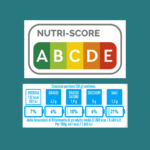Gul Basak Kiroglu, Regulatory Trends Product Manager
I guess I am simply lucky. I have never had a food allergy. I’ve never had to read any label or restrict my diet out of fear of what I eat could be a threat to my health.
For a friend and colleague of mine, allergen avoidance for her daughter is serious. My friend patiently and diligently follows the doctor’s guidance. While she makes gastronomic experiments to include some dairy products in her daughter’s diet in a controlled way, she struggles to understand food labels and asks questions on the menu in restaurants frequently.
In the same way as consumers are affected by food allergies, food manufacturers understand the importance of staff education regarding food allergies to reduce the likelihood of food recalls due to undeclared allergens. The following article reviews the basics of food allergies and allergy label regulations.
What is a food allergy?
Food allergies are caused by immunological reactions in individuals sensitized to normal protein components of foods. A food allergy causing an immune reaction is different from a food intolerance, which might only affect the digestive system and cause less serious symptoms. It is estimated that almost 6 percent of adults and children in the US have a food allergy. Similar data is observed in Canada as well.
While any food can cause an adverse reaction, the followings are accountable for about 90 percent of all reactions:
- Eggs
- Milk and Dairy
- Peanuts
- Tree nuts
- Fish
- Shellfish
- Wheat
- Soy
- Sesame
What are the consequences of exposure for those with food allergies?
Symptoms of exposure to a food allergen range from mild to severe. The most severe allergic reaction is anaphylaxis, a life-threatening whole-body allergic reaction that can impair breathing, cause a dramatic drop in blood pressure and affect heart rate. Anaphylaxis can start within minutes of exposure to the trigger food. It can be fatal and must be treated promptly with an injection of epinephrine.
In the UK, 101,891 people were hospitalized for anaphylaxis between 1998 and 2018. About 30 percent of these admissions were due to a food trigger.
How are food allergens regulated?
Although early exposure might reduce the risk of some food allergies, currently there is no cure. For food manufacturers, it is important to understand that no level of allergen presence is recognized as safe across a population. As a result, current legislative approaches for food allergens are purely qualitative, i.e., a product either does contain allergens or could potentially contain allergens based on the production facility. The requirement notifies consumers via food product labels of the presence of allergenic foods. Allergic individuals can then avoid intake of foods with the potential to contain even minute amounts of an allergen.
A multitude of countries deem food allergies as a public health issue due to the prevalence of allergies in their consumer population. While there is no global framework for food allergen labeling, Codex developed the Code of Practice on Food Allergen Management.
In the US, the Food Allergy Safety, Treatment, Education, and Research (FASTER) Act added sesame as the ninth major allergen subject to manufacturing and labeling regulation starting last year. As an unintended consequence, sesame is now purposedly being added in food more than before. Some food producers state that because cross-contamination regulations are so stringent, the easier choice is to add sesame and note it on the label. FDA has not found the practice to violate allergy law.
In the EU, 14 allergens are defined and must be highlighted on the ingredient list or indicated on the label as “contains.” In the UK, the FSA requires allergens to be emphasized on in the ingredients list.
For more information on emerging regulatory topics, subscribe to FoodChain ID’s monthly Report on Food Labeling.










